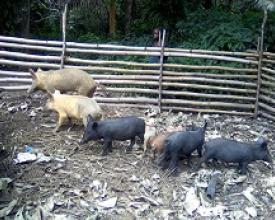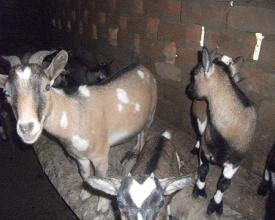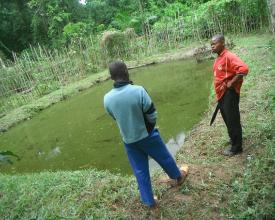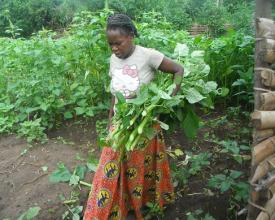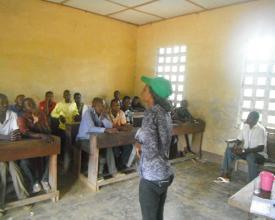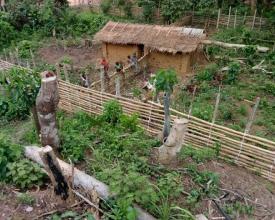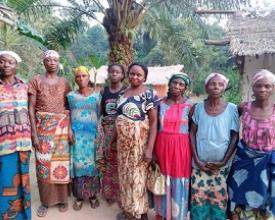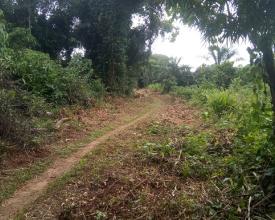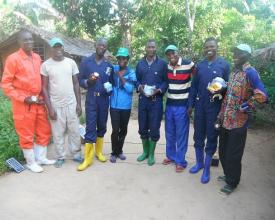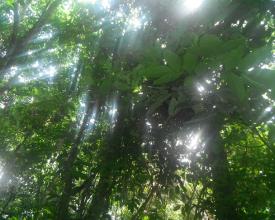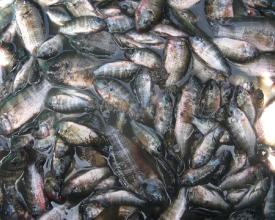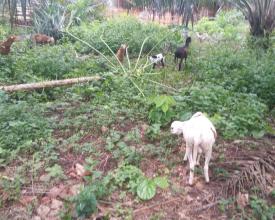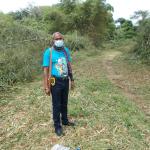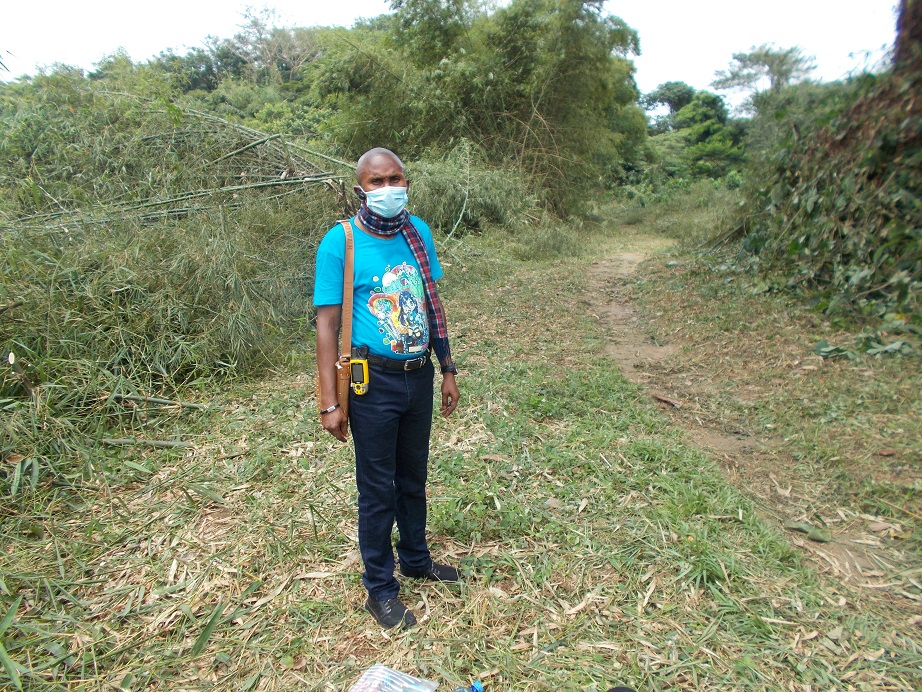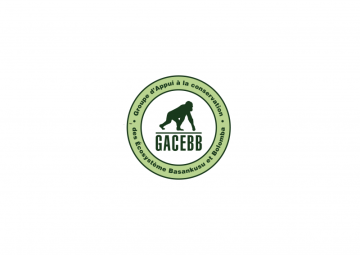
Integrated community conservation project for bonobos and the forests of southern Basankusu in D R Congo
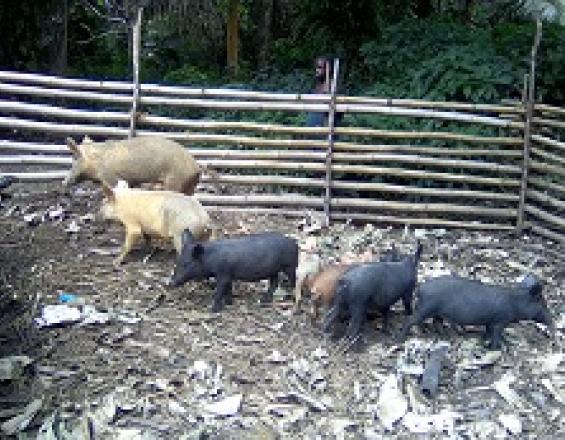
Our area of intervention (the southern Basankusu region) is particularly landlocked, and over 80% of its inhabitants are hunters, farmers and artisanal operators.
The local economy is underdeveloped due to a lack of infrastructure, businesses, international organizations, businessmen and women and, more generally, jobs. As a result, the area's population relies directly on nature as the sole source of their livelihood.
To avoid these serious risks of deforestation and forest degradation, and the disappearance of the bonobos, we have initiated a community-based approach to biodiversity conservation (an approach centred around the local people) as our one and only working strategy.
Based on these CLIPs, we have developed a number of community-based actions to protect bonobos and their habitats, which are beneficial to both humans and bonobos (see some of the images sent in).
Context
Challenges addressed
Our challenges can be summed up as follows:
- Improving the daily living conditions of local communities by eradicating the poverty and precariousness suffered by local communities in our intervention zone,
- Securing the habitat of bonobos in the southern Basankusu region,
- Improving the environment for the coexistence of the human species and bonobos, given that they both share the same environment,
- Adaptation to climate change based on a resilient model,
- Resilient work in the face of the risks and consequences of the Covid-19 pandemic,
- Promoting the emergence of environmental awareness in favor of endangered species and natural habitats.
Location
Process
Summary of the process
You'll notice that our initiative (solution or approach) can only be properly implemented if we work by making the two constituent blocks of our solution interact. To maintain bonobos and other wildlife populations and reduce human pressures in the biotopes concerned, we need to promote local development by actively listening to the free consent of local communities (FPIC) and responding favorably to their needs, while at the same time using community environmental awareness-raising activities to promote their environmental awareness in favor of threatened species and habitats and their self-care. The conservation of the bonobos and forests of southern Basankusu can only be operational and effective if we commit ourselves to cooperating intensively with local communities without imposing our values on them. This is the act of our commitment to the region, which is indeed our philosophy, strategy and approach.
Building Blocks
Conservation through ecological monitoring of primates and other large fauna species
To achieve community-based, participatory conservation of bonobos and their associated habitat, we believe it is essential to monitor primates, i.e. bonobos and other species of small monkeys, as well as other species of large fauna. To this end, the NGO GACEBB is working with local communities to select Community Trackers (CTs) with proven expertise in the forest in question to carry out ecological monitoring of these species, and to record on a pre-established form whether the numbers of the flagship species (the bonobo) are increasing or decreasing, and also whether human pressures are decreasing or increasing, as well as ascertaining whether or not other species of large fauna are present.
Enabling factors
The involvement of the local communities concerned, the commitment of the chosen Community Trackers, the commitment of the local authorities to support GACEBB in its actions, GACEBB's implicit response to the needs (felt to be priorities) of the local communities expressed during the socio-economic surveys and the dedicated commitment of the GACEBB team despite the meagre salary are just some of the factors influencing the success of our actions.
Lesson learned
- Let communities express their consent to any action,
- Encourage the involvement of all social groups in your conservation actions,
- Strive at all costs to remain a local structure, i.e. one that listens to local communities, responds to their expressed needs and applies transparency in project management,
- Always be proactive in knowing how to support communities in the face of current challenges (disappearance of biodiversity, resurgence of the coronavirus pandemic, climate change, etc.).
Community conservation of bonobos and southern Basankusu forests through local development
In order to enable community-based, participatory and inclusive conservation, local development is a very important and relevant component in the implementation of our actions.
That's why we decided to initiate an approach centered on local communities living near the biotopes we are promoting for the conservation of bonobos and their associated habitats. By responding favorably to community needs and feelings, and by supporting them in the rational, reasoned and sustainable management of their natural and acquired resources, we have achieved success rates of up to 85% for our solution.
The various micro-projects put in place (goat rearing, pig rearing and pilot fish farming; family vegetable gardens; micro-trades and others) have been replicated by the beneficiary associations and by 75% of the inhabitants throughout the project area, and have helped to increase the income of local communities, enabling them to meet their material, financial and food needs. So far, this has been an effective solution to the problem of preserving biodiversity in general, and bonobos and their habitats in particular.
Enabling factors
- Involving local communities in socio-economic surveys and environmental awareness campaigns,
- Support for micro-projects implemented by local beneficiary communities,
- The commitment of local communities to the sustainable replication of these micro-projects,
- The involvement of local authorities in supporting GACEBB in its actions,
- The dedicated and willing involvement of GACEBB's technical team (animators-accompanists).
Lesson learned
- Taking charge of projects implemented on the basis of the consents (CLIPs) of the local communities themselves,
- Always be a structure that works in communion with local communities,
- Not dictating to communities what values they should live by, but always listening to them and accompanying them,
- Favoring an information and training approach to promote their socio-environmental awareness in favor of threatened species and their habitats, as well as in their own favor (eco-development).
Impacts
Our people-focused solution initially involved reorganizing our target groups (hunters, their wives and female bushmeat sellers) into local development associations (known as Farmers' Organizations, "FOs"), followed by awareness-raising campaigns and various types of survey to collect their CLIPs.
On the basis of these consents, the said OPs undertook to implement various types of micro-projects (breeding of small livestock, lowland animals, fish farming, family vegetable gardens and ecological monitoring of bonobos) as well as the rehabilitation of the Ikela road, which had been blocked to the movement of people and their goods for several decades.
On a socio-economic level, the communities have seen their solidarity-based way of life strengthened through these various groupings, the involvement of local women in the region's survival process has been reinforced; their income, both financial and material, has been increased, which has ipso facto improved their living conditions and those of the bonobos;
On the environmental front: Reduced anthropic pressure on bonobo habitats, the presence of the last remaining bonobo populations and the security of our work.
Beneficiaries
The direct beneficiaries are the 165 members (78 men and 87 women) of the 13 OPs and the 12 community trackers. The indirect beneficiaries are the 14,500 inhabitants (4,105 men, 4,213 women and 6,182 children) of the Mondjondjo I and Buya groups.
Sustainable Development Goals
Story
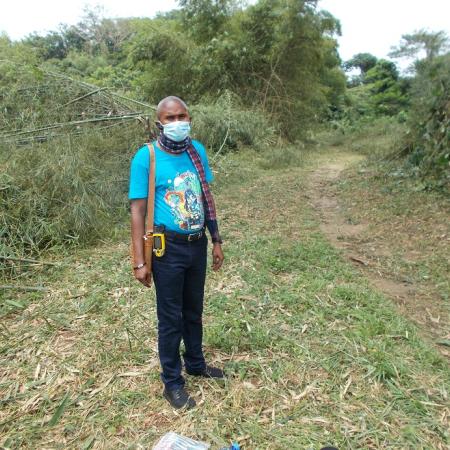
In the days of our ancestors, particularly in the 1970s, the GACEBB intervention zone consisted of multiple dense tropical rainforests where we found different types of flora and fauna. Life was accessible to everyone, there was enough to eat and satisfy primary and priority needs. The area was easily accessible, but today it's practically landlocked and there are no easy means of communication between it and the major towns such as Mbandaka and Kinshasa.
Over 80% of the population are hunters and farmers. The local economy is very underdeveloped, with a lack of infrastructure and businesses, international organizations, businessmen and women and, more generally, jobs for the region's inhabitants, which explains why the population mainly practices self-subsistence hunting and farming (direct exploitation of nature).

